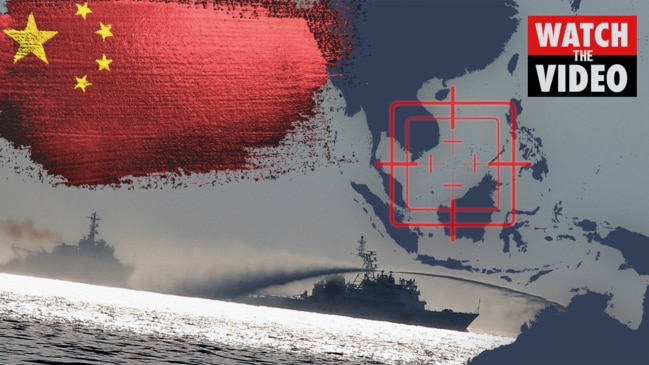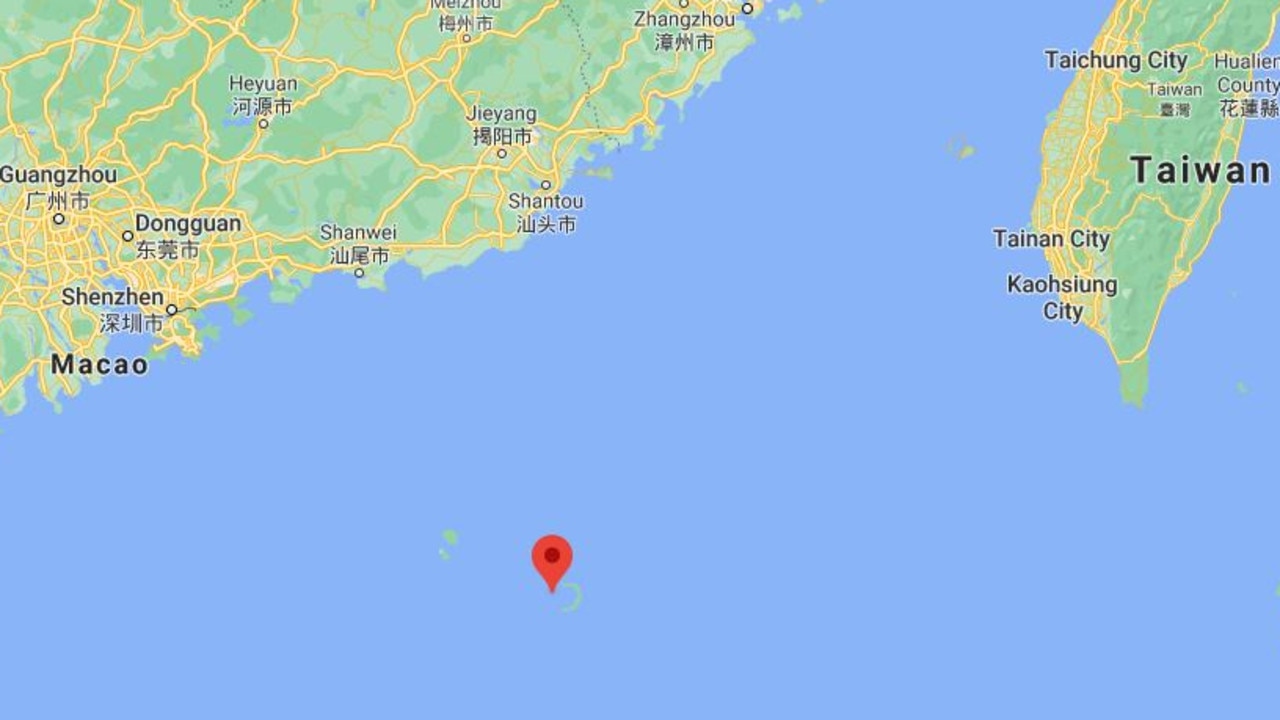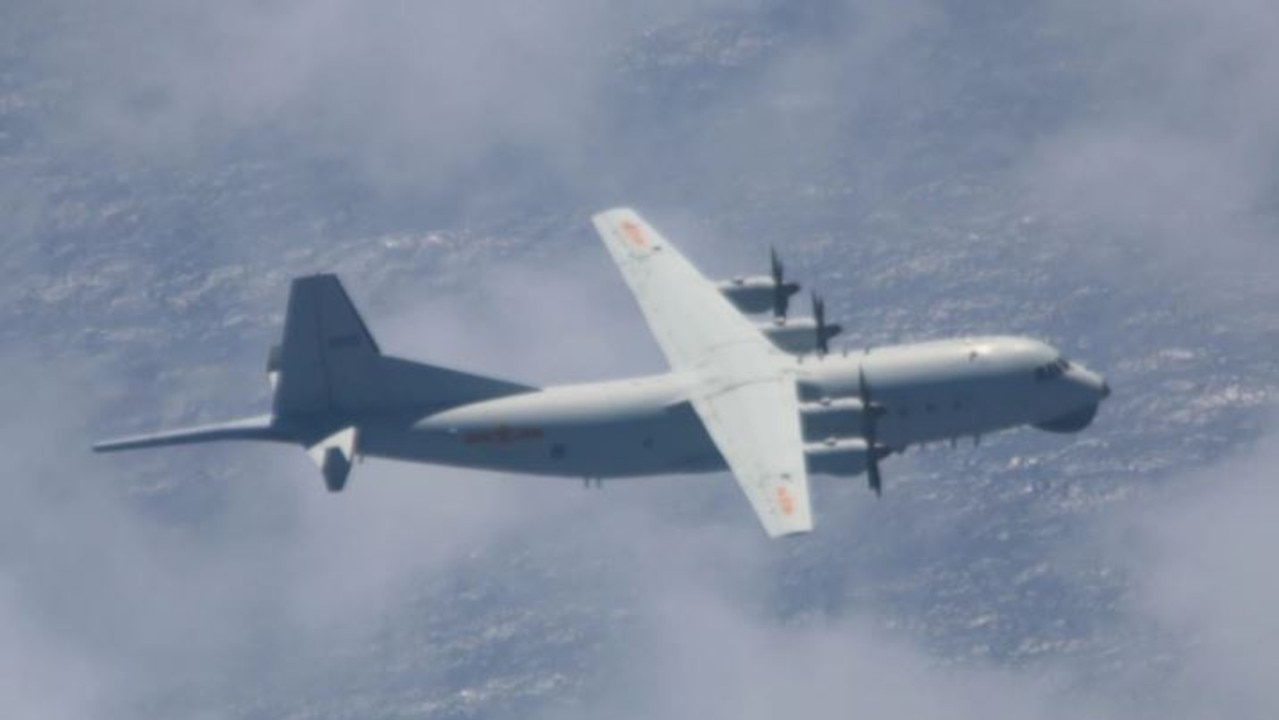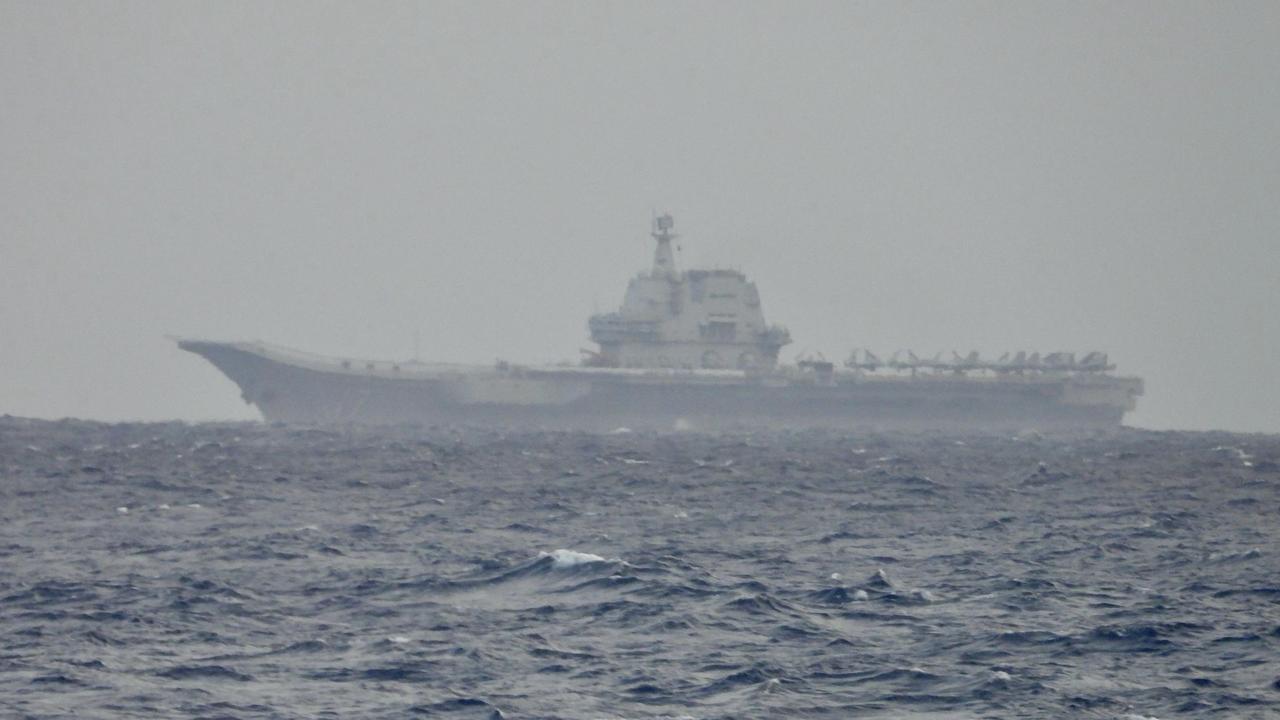Pratas atoll declared ‘danger zone’ as Chinese combat planes fly over
It’s just a bunch of coral in the South China Sea but this island has been declared a “danger zone” after an aggressive move by China.

It’s just a bunch of coral. But Pratas atoll between Taiwan and China has been declared a “danger zone” as combat aircraft ply the skies overhead.
Beijing is showing increasing interest in the isolated Pratas (also known as Tungsha or Dongsha) atoll – one of Taiwan’s few South China Sea outposts.
Beijing’s ongoing campaign of testing Taipei’s air defences has fallen into a pattern in recent weeks. Provocative crossings of the Median Line between the two nations are rare but significant. Instead, isolating the remote outcrop of coral appears to be one focus of China’s assertive actions.
RELATED: ‘Prepare for war’: China hits back

RELATED: ‘Immediately stop’: China’s warning to US
The People’s Liberation Army (PLA) air force has conducted more than 225 intrusions into Taiwan’s self-declared Air Defence Identification Zone (ADIZ) between Taiwan and the island so far this year.
Then, late last week, attempts to send a civilian aircraft on a regular resupply mission to the island was denied by Hong Kong air traffic control. The Pratas atoll was a “danger zone”, the Hong Kong Civil Aviation Department said. “The danger zone is now valid until further notice.”
Now, the US nuclear-powered aircraft carrier USS Ronald Reagan is again making its presence felt in the South China Sea – the third time so far this year.
STRATEGIC HUB
The Pratas atoll marine park is some 440km from Taiwan’s southernmost city. It’s 340km from Hong Kong. But its position at a Junction Point between the Taiwan Strait and the Luzon Strait (between Taiwan and the Philippines) gives it a degree of strategic significance. This is because it sits on the path Chinese forces based on Hainan Island and China’s south coast to the Pacific and East China Sea.
The Hong Kong-based South China Morning Post, now subject to Beijing’s strict National Security laws, reports new DF-17 ‘carrier killer’ missiles have been deployed along the coasts of China’s Guangdong, Fujian and Zhejiang provinces.
“The size of some of the missile bases in the Eastern and Southern theatre commands have even doubled in recent years, showing the PLA is stepping up preparations for a war targeting Taiwan,” says Andrei Chang, editor of the Kanwa Defence Review. And China’s newly expanded Marine Corps has been headquartered in Chaozhou city, just 328km from the islands.
Pratas atoll is garrisoned by some 200 Taiwanese Coast Guard and Marine personnel, there to defend Taipei’s ownership and enforce maritime reserve laws. The coral outcrop is one of the few in the South China Sea unspoilt by Beijing’s artificial island fortress building campaign.
RELATED: China’s aggressive move in South China Sea

ESCAPE ROUTE
Its proximity to Hong Kong has made Pratas atoll a potential escape route for pro-democracy activists seeking to flee retribution from the Chinese Communist Party.
One such incident involved the rescue of five people attempting to reach the islands by the Taiwanese Coast Guard in July. Another 12 were arrested by Chinese authorities trying to do the same thing in August.
Beijing has since moved to crack down on such attempts to escape its new National Security Law that declares any dissent in the once semi-autonomous city to be insurgency.
Project 2049 Institute think-tank analyst Jessica Drun told the US-government controlled Radio Free Asia she believes the overflights and escape attempts may be linked. Beijing could be “sending a message to Taipei not to intervene or support Hong Kong democracy activists,” she said.
“The Hong Kong factor could be used as a convenient and timely pretext for increased surveillance around Pratas, as well as any further escalation.”
MARKING TERRITORY
China has been actively surveying the islands and the surrounding waters. Most aircraft intrusions have been by surveillance aircraft, including those designed for anti-submarine and electronic warfare roles. But Chinese survey and fishing militia vessels have also been active in the region.
The Chinese aircraft carrier Liaoning and its battlegroup passed close by as Beijing practised storming beaches in May. In June, the Chinese State Oceanic Administration survey ship Hai Yang Di Zhi 9 conducted a deep-sea geological survey to the south of the atoll. A similar survey last year mapped its north and east.
It’s all part of a campaign to pressure the democratically elected president of Taiwan, Tsai Ing-wen, into a more compliant relationship with Beijing.
Instead, Taipei has now resolved to send more aircraft to patrol the area and deploy additional anti-aircraft missiles and radar systems.
Jamie Seidel is a freelance writer | @JamieSeidel




